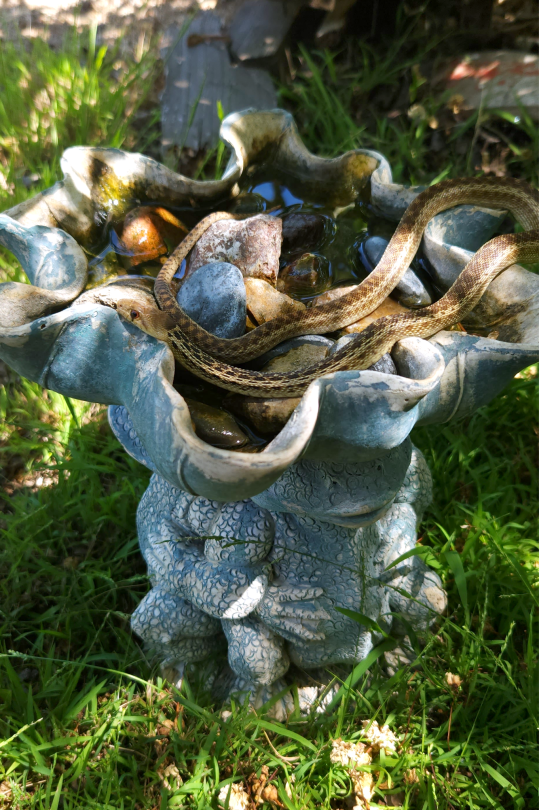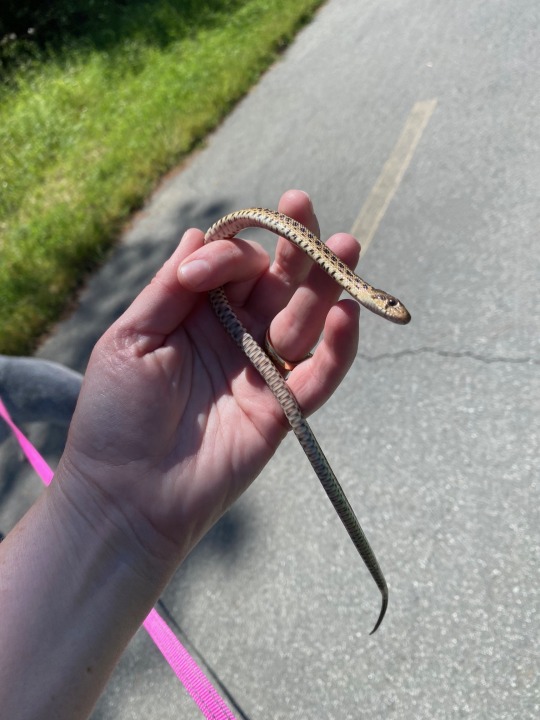#gopher animates
Explore tagged Tumblr posts
Text

oh lawd he comin
109 notes
·
View notes
Text

An enchanting neighbourhood
#wip#animal crossing#crossover#listen animal crossing is so peaceful and silly it’s perfect for the 100 acre wood#especially now we can garden like rabbit and terraform like gopher#so after talking to my friend about it I decided to draw it#I know some of these personalities are for a different gender but I don’t really care….#there are 3 more characters I can draw but idk if I’ll bother#anyway wtp fanart in the years 2025#I’m passing thought ash down forest today so if I see any of these guys I’ll tell them hello for you….#…the origional found family#winnie the pooh#piglet#tigger#eeyore#Kanga and roo#wtp rabbit#wtp owl#wtp gopher
2K notes
·
View notes
Text

I felt very confused by the word gopher, so I made myself a handy field guide to look at
815 notes
·
View notes
Text
I am absolutely fascinated by the ecological recovery of the immediate blast zone around Mt. St. Helens. It was wiped clean of almost all life during the 1980 eruption, and in the aftermath it was decided that this area would be allowed to recover on its own, rather than being deliberately replanted by timber companies with a monoculture of Douglas fir, or by conservationists with a biodiverse array of native plants. This means the area is giving scientists an unprecedented close-up look at how an ecosystem recovers from such a massive natural disturbance.
This isn't to say there haven't been a few nudges by human activity. Rumor has it that local fishing clubs sneaked up to Spirit Lake and illegally stocked it with trout, though I've also heard claims that they arrived from a nearby stream, possibly originating from the higher elevation St. Helens Lake (which may itself have been restocked by humans.)
But the single day--two years after the eruption--that a batch of northern pocket gophers spent on the mountain made a big difference in the recovery of plant communities. (By the way, the picture in the article appears to be a ground squirrel, not a gopher.) Over forty years after their sojourn, the sites they were temporarily introduced to show much better plant growth due to the mixing of the soil microbiome, to include mycorrhizal fungi, bacteria, and other microbes. This microbial jump-start was caused by the gophers' digging, demonstrating why fossorial (burrowing) animals are so important to ecosystems. Without them, soil microbial communities can stagnate, and in the case of areas damaged by massive disasters, a lack of fossorial species can make recovery take much longer.
Speaking of disasters, scientists also found that forests that had been clearcut prior to the eruption had poorer, less diverse microbial communities than areas that had been more mature or old-growth forests, even when both areas were given the gopher treatment. This is yet more evidence that clearcutting forests is terrible for local ecology, because it not only removes entire ecosystems above ground, but below ground as well. And it shows that mature and old-growth forests are better equipped to weather disasters, with their higher biodiversity overall.
If we've learned anything ecologically from the 1980 eruption, it's that nature is incredibly resilient if we just give it the space to recover. The problem is that we keep poking at the wounds we create, not allowing them to heal over properly. By using more sustainable forestry practices, using resources more wisely, and preserving mature and old-growth forests, we increase the likelihood that the deeply intertwined life-support systems the planet provides (and which we, and all life, rely on) will remain functional in spite of our efforts to tear them apart in the name of resource extraction.
#Mt. St. Helens#volcano#geology#ecology#gophers#mammals#animals#wildlife#nature#science#scicomm#PNW#pacific Northwest#Washington#environment#conservation#clearcutting#logging#forests#fungi
521 notes
·
View notes
Text


Teeny tiny baby gopher tortoise
#photography#original photographers#nature#photographers on tumblr#florida#cottagecore#reptiles#gopher tortoise#tortoise#tiny#baby animals#cute animals
1K notes
·
View notes
Text
04.16.2025 -- Story by Richard Luscombe
Dozens of gopher tortoises (Gopherus polyphemus) survived a perilous sea crossing after being swept from their homes during Hurricane Helene last summer and are enjoying a new lease on life on a remote stretch of Florida coastline.
Rangers at Fort De Soto county park near St. Petersburg say that before the September storm only eight members of the vulnerable species were known to be living there.
Now, after the astonishing journey, a count last month confirmed 84 active burrows, suggesting the tortoises quickly adapted to their new habitat after their forced eviction from Florida’s Egmont Key National Wildlife Refuge, a tiny island more than three kilometers (two miles) southwest that was pummeled by the Category 4 hurricane.
As well as sparking a surge of interest in the park in the form of visitors keen to catch a glimpse of the unexpected new arrivals, the tortoises are providing benefits for some of the animals that already lived in the 445-hectare (1,100-acre) environment.
“They’re a keystone species, which means they share their burrows with other species, and there’s been something like 250 different species recorded as living in gopher tortoise burrows,” says Anna Yu, a Fort De Soto ranger who has assumed responsibility for the roving reptiles’ well-being.
“Everybody in the ecosystem benefits from gopher tortoises being there, and we’ll hopefully see an increase in biodiversity in the park. Because we have all these new burrows, other animals are able to use them, like eastern diamondback snakes, black racers, all kinds of different reptiles,” she says.
“The last time a gopher frog was listed as being one of the species in the park was in 2016, so it’s really cool to think that maybe some of these really imperiled species that rely on gopher tortoise burrows to survive might make their way back.
“I don’t expect to see frogs popping up everywhere, but there’s certainly more of a chance than before this happened.”
Yu and her colleagues knew the tortoises had come across the water from Egmont Key because biologists from St. Petersburg’s Eckerd College, who were studying them, had drilled small holes in their shells as identification markings.
Tortoises are poor swimmers, and many likely drowned during the hurricane. At least 40 were discovered washed up dead. But the survivors, Yu says, would have floated and been carried on the surface as Helene’s winds whipped the water surging toward the beaches of the mainland. “It’s like they knew exactly where to go; they went a little bit higher in hopes of not being drowned out by another storm. There’s a little bit of intelligence there,” she says.
Even more exciting are the mating behaviors some of the tortoises have exhibited, suggesting a new generation of gopher tortoises will soon be plodding around.
“It’s a sign they’re thriving. Being able to mate is a sign of success,” Yu says.
“The main point in all this is that we want to make sure Fort De Soto is, above all, a wild place and home to an abundance of wildlife that depends on the people that come through, depends on their respect and all of our collective stewardship of their habitat to survive.
“I think this is a really ecologically important event. It’s a feel good story too, of course, but it’s also very critically important environmentally.”
“The whole event was just sheer luck that they ended up at Fort De Soto and not out at sea, or at some of the other beaches north of St. Pete Beach and Treasure Island, really popular beaches that don’t have the habitat to support these creatures,” she says. “It could have turned out a lot differently for them.”
Their behaviors since washing ashore have also fascinated observers. Some of the tortoises, presumably traumatized by their hazardous odyssey, burrowed deep into higher elevations. The majority of the burrows, Yu says, were dug beyond Helene’s storm surge line.
#gopher tortoise#florida#usa#disaster recovery#hurricanes#tortoise#good news#environmentalism#science#environment#nature#animals#conservation
346 notes
·
View notes
Text

"Bird" #42 - the thirteen-lined ground squirrel
(Dont worry this is the last mammal for now haha)
These charming lil' guys are found across a wide swathe of North America. They can hibernate for a whole six months of the year!
Apparently the babies aren't born with the stripes and they only develop at about 12 days old which I think is really cute.
#bird of the day#kind of#The art will be lower effort for a while because ✨exams✨#rodents#artists on tumblr#animal art#ground squirrel#gopher
679 notes
·
View notes
Text

Bullsnake (Pituophus catenifer sayi), defensive display, family Colubridae, Wichita Mountains Wildlife Refuge, OK, USA
Though this snake was once considered (by some herpetologists) to be a distinct species, P. sayi, it is now considered to be a Gopher Snake subspecies.
photograph by Randy Jones/USFWS
481 notes
·
View notes
Text



Going to Ground with the Gopher Tortoise
The gopher tortoise, sometimes specified as the Florida gopher tortoise (Gopherus polyphemus), is a species of tortoise found only in the southeastern United States. They require highly specialized habitats of dry, sandy soils, few trees, and a variety of low-growing vegetation. These habitats include coastal scrub, pine flat-woods, and sparse prairie.
As their name implies, gopher tortoises spend a large part of their time underground. They are widely known for digging large burrows, on average 4.5 m (14 ft) in length and 2 m (6.5 ft) deep. These burrows are particularly used at night and during the winter, where they can maintain a steady temperature throughout the year. Individuals maintain a relatively small home range around their burrow(s), up to 1.6 acres. Within this range, they forage on a wide variety of grasses, flowers, and shrubs. Gopher tortoises are also predated on by a variety of animals; eggs and juveniles are vulnerable to raccoons, coyotes, bobcats, skunks, birds of prey, and snakes. Adults are more shielded, but can still be coyotes, bobcats, Florida black bears, and Florida cougars.
Like other tortoises, G. polyphemus is heavily armored by a thick shell encasing the body. When threatened, individuals can pull their heads and limbs inside the shell for protection. Adults can reach a maximum length of 38.7 cm (15.24 in) and an average mass of 5.5 kg (193.83 oz), with females usually being slightly larger than males. The coloration is rather dull to blend into their surroundings, usually dark brown, tan, or grey on top and lighter tan on the bottom of the shell.
Mating for Florida gopher tortoises can occur from March through December. When they are ready to mate, males court females by bobbing their heads and walking in circles around the female. If she reciprocates, she may allow the male to mount; this process can be repeated several times over the course of several hours. Both sexes will mate with multiple partners throughout the season. After mating, the female digs a large hole and lays a clutch of 5-8 eggs. These eggs take 80 to 100 days to hatch, and young are immediately independent. Young are extremely vulnerable to predation, but those that survive reach full maturity between ages 9 to 21. Individuals can live up to 70 years in the wild.
Conservation Status: Florida gopher tortoises are considered Vulnerable by the IUCN. The species is threatened primarily by habitat destruction and fragmentation.
Photos
Florian Marchner
Amanda Hurst
Charles Warren
#florida gopher tortoise#Testudines#Testudinidae#gopher tortoises#tortoises#turtles#reptiles#deserts#desert reptiles#scrubland#scrubland reptiles#evergreen forest#evergreen forest reptiles#north america#southern north america#animal facts#biology#zoology#ecology
139 notes
·
View notes
Text



Wild babby gopher snake!! So tiny and cute taking a lil soaky-soak on a warm day. Blep blep right back atcha, lil buddy.
#was so tempted to tickle his belly where it was hangin off but i dont wanna bother him more than i already did by taking pics#i got a snake in the house whose belly i can tickle anyway#snakes#sneks#gopher snake#cute#reptiles#animals#snake#wild snake#gif warning#Cori.exe#Image.exe#cute snake#seriouslh what tags do i need just look at this bABY#he cant be more than a few months old#pls eat the gophers lil snakey#((probably been eating all the lizards tho idk what else is prey sized when hes so tiny))#((i have seen a housecat catch a wild mouse in our front yard tho so maybe there are more wild mice i just dont see often))
64 notes
·
View notes
Text


"The newest member of Coyote's "Dirt Devils", some feral outta the Bakkers. Apparently a bit of a mad dog, she's been keeping him on a short leash." "He got a name?" "They call him Diamondback."
#cyberpunk 2077#oc: dagger#cyberpunk photomode#yes before dagger was dagger he was diamondback and before that he was [redacted]#this would have been likkeeeee 2066ish somehwere in there#he was with a group of smugglers n everyone involved used animal aliases#there was also gopher fennec and hawk#and ofc. coyote who was the leader :3#very formative years for him actually tbqh#also in my lore the galena rattler was originally his car ;A; part of the joke on his name heh#he eventually leaves it when hes made raffen and v inherits it/fixes it up#and then v gives it to al and it GOES FULL CIRCLE :ratscream:#sorry for the lore dump i just think hes neat
66 notes
·
View notes
Text
Half-assed Trickshot animation where I forgor to draw his wings
#gopher animates#gopher art#tf2 sniper#team fortress 2#maybe one day I'll actually be semidecent at animation
45 notes
·
View notes
Text


I went for a hike with one of my favorite humans today and found this little darling sunning themselves on a popular trail. I decided to move them off the path as there were a LOT of bikes whizzing by, and they were so polite! No hissing, no musking, no bites!
@snake-spotted I thought you'd appreciate my new friend too!
215 notes
·
View notes
Text


#sketch dump#my art#ow2 fanart#ow2#venture ow2#venture overwatch#thinking about how the ship for venture and sombra could be a pun on gopher#you know#bc it's both a old way to share documents over a network and a fucking animal that digs#i'm very smart and gay#need to learn how to draw sombra#really love them as a ship
137 notes
·
View notes
Text
Ecology is one of those disciplines where there is just so, so much we don't understand yet. Yes, we know that the many species within a given ecosystem have a widespread, complex network of interrelationships, but we only have the barest understanding of a fraction of them. It's like having a symphony where you've heard everyone playing, but you only have some notes from some of the musicians' sheet music, and so you can't yet put together how it all works.
In this case, we're seeing just how important northern pocket gophers (Thomomys talpoides) are to their ecosystems. After the devastating eruption of Lawetlat'la/Loowit/Mt. St. Helens in May 1980, the land was left burned and covered in tons of ash and tephra. While some zones further out from the mountain were replanted by timber companies, the area directly around the eruption site has been allowed to recover naturally because this offers North American scientists an unprecedented chance to see how an ecosystem recovers after such a large eruption, at a place that is easily accessible.
When a small number of gophers were returned to an ash-covered area of the mountain for just twenty-four hours in 1982, they kicked off what would be a forty-year study in ecological resilience. In areas with no gophers, there were only a few struggling plants born from seeds transported by birds, while in places where the little mammals were able to burrow and turn over dirt, scientists found 40,000 individual plants. This was due to the fact that the gophers were able to free soil fungi and other microbes beneath the ash and give them a chance to repopulate closer to the surface where they normally would be found. In turn, seeds of plants that had mycorrhizal relationships with the fungi, or which otherwise benefited from the increased microbial biodiversity, flourished.
And forty years later, the pattern still stands, with the gophers' work reverberating to this day. If one small mammal can have such a profound effect in a miniscule amount of time, imagine what happens when we reintroduce extirpated species to other eplaces. The volcanic area may be left to repopulate naturally as scientists continue to study it, but there are countless badly damaged ecosystems in need of restoration. The results of this experiment clearly support the importance of returning as many native species to an ecosystem as possible, because even those that may seem insignificant have invaluable contributions to make to the whole.
#nature#wildlife#animals#ecology#environment#science#conservation#scicomm#pnw#pacific northwest#Mt. St. Helens#Lawetlat'la#Loowit#habitat restoration#restoration ecology#gophers#Washington#good news
643 notes
·
View notes
Text


A gopher tortoise getting down on a gopher apple. I mean he destroyed that thing


#photography#original photographers#photographers on tumblr#nature#florida#gopher tortoise#tortoise#gopher apple#animals eating#cute animals
325 notes
·
View notes